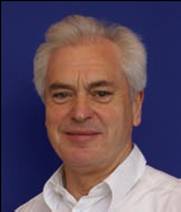
Professor Ian Robertson
- Position: Emeritus Professor of Psychology, Co-Director Global Brain Health Institute
- Contact details: Rm 0.46, GBHI, Institute of Neuroscience, Lloyd Building
- Email: ian.robertson@tcd.ie
- Telephone: 353-01-896-2684
Biography
Research Interests
- Cognition and aging: Robertson’s 2013 noradrenergic theory of cognitive reserve proposed that the protective effects that variables such as IQ and education level have on dementia are mediated by a lifetime’s enhanced noradrenergic – and hence neuroprotective – activation and this has subsequently been supported in research from Chicago (Wilson, R.S., et al . 2013. Neural reserve, neuronal density in the locus ceruleus, and cognitive decline. Neurology 80, 1202-8.) and San Diego (Clewett, D.V.,et al 2015. Neuromelanin marks the spot: identifying a locus coeruleus biomarker of cognitive reserve in healthy aging. Neurobiology of Aging available online ahead of print 29 October 2015) cohorts. His group also for the first time demonstrated a specific deficit in self-awareness associated with aging and subsequently showed a right dorsolateral-prefrontal cortex role in this crucial cognitive capacity whose laboratory measurement predicts real life reduced self-awareness.
- Harty S, Robertson IH, Miniussi C, Sheehy OC, Devine CA, McCreery S, O'Connell RG. Transcranial direct current stimulation over right dorsolateral prefrontal cortex enhances error awareness in older age. J Neurosci. 2014 Mar 5;34(10):3646-52. PubMed PMID: 24599463.
- Harty S, O'Connell RG, Hester R, Robertson IH. Older adults have diminished awareness of errors in the laboratory and daily life. Psychol Aging. 2013 Dec;28(4):1032-41. PubMed PMID: 24364407.
- Robertson IH. A noradrenergic theory of cognitive reserve: implications for Alzheimer's disease. Neurobiol Aging. 2013 Jan;34(1):298-308. PubMed PMID: 22743090.
- O'Connell RG, Balsters JH, Kilcullen SM, Campbell W, Bokde AW, Lai R, Upton N, Robertson IH. A simultaneous ERP/fMRI investigation of the P300 aging effect. Neurobiol Aging. 2012 Oct;33(10):2448-61. PubMed PMID: 22277263.
- Cognitive neuroscience. Robertson’s 1997 paper on sustained attention has been cited almost 1000 times. His group was the first to show using cognitive genomic research that there is a strong noradrenergic underpinning to sustained attention and was also the first to show that noradrenergic activity in waking humans can be measured using pupillometry. His research on sustained attention grew out of his work on spatial neglect, and his was the first group to show an intimate causal linkage between sustained and spatial attention.
- Murphy PR, O'Connell RG, O'Sullivan M, Robertson IH, Balsters JH. Pupil diameter covaries with BOLD activity in human locus coeruleus. Hum Brain Mapp. 2014 Aug;35(8):4140-54. PubMed PMID: 24510607.
- Greene CM, Bellgrove MA, Gill M, Robertson IH. Noradrenergic genotype predicts lapses in sustained attention. Neuropsychologia. 2009 Jan;47(2):591-4. PubMed PMID: 18973765.
- Robertson IH, Mattingley JB, Rorden C, Driver J. Phasic alerting of neglect patients overcomes their spatial deficit in visual awareness. Nature. 1998 Sep 10;395(6698):169-72. PubMed PMID: 9744274.
- Robertson IH, Manly T, Andrade J, Baddeley BT, Yiend J. 'Oops!': performance correlates of everyday attentional failures in traumatic brain injured and normal subjects. Neuropsychologia. 1997 Jun;35(6):747-58. PubMed PMID: 9204482.
- Interventions to improve cognition Robertson’s 1999 paper was the first attempt at developing a theoretical model of neuropsychological rehabilitation and his work on using an understanding of brain circuitry to inform rehabilitation methods has led to a number of novel approaches to rehabilitation of cognitive function, including age-related deficits.
- Milewski-Lopez A, Greco E, van den Berg F, McAvinue LP, McGuire S, Robertson IH. An evaluation of alertness training for older adults. Front Aging Neurosci. 2014;6:67. PubMed PMID: 24782764; PubMed Central PMCID: PMC3990037.
- O'Connell RG, Bellgrove MA, Dockree PM, Lau A, Fitzgerald M, Robertson IH. Self-Alert Training: volitional modulation of autonomic arousal improves sustained attention. Neuropsychologia. 2008 Apr;46(5):1379-90. PubMed PMID: 18249419.
- Robertson IH. Cognitive rehabilitation: attention and neglect. Trends Cogn Sci. 1999 Oct;3(10):385-393. PubMed PMID: 10498929.
- Robertson IH, Murre JM. Rehabilitation of brain damage: brain plasticity and principles of guided recovery. Psychol Bull. 1999 Sep;125(5):544-75. PubMed PMID: 10489541.
- Multidomain cognitive assessment: Robertson’s Test of Everyday Attention (Pearson) and Test of Everyday Attention for Children (Pearson) are the most widely used clinical tests of attention in the world, translated into dozens of languages and the only ones that a) focus on simulated real-life activities and b) are both well-normed and standardized and strongly theoretically-based, yielding separate measures of three supramodal components of attention. His group also published the first study of the test-retest reliability of EEG-based evoked potentials, showing that some of these commonly-used measures are not reliable while others are.
- Cassidy SM, Robertson IH, O'Connell RG. Retest reliability of event-related potentials: evidence from a variety of paradigms. Psychophysiology. 2012 May;49(5):659-64. PubMed PMID: 22335452.
- McAvinue LP, Vangkilde S, Johnson KA, Habekost T, Kyllingsbaek S, Robertson IH, Bundesen C. The relationship between sustained attention, attentional selectivity, and capacity. Journal of Cognitive Psychology. Journal of Cognitive Psychology. 2012; 24(3):313-328.
- Crawford JR, Sommerville J, Robertson IH. Assessing the reliability and abnormality of subtest differences on the Test of Everyday Attention. Br J Clin Psychol. 1997 Nov;36 ( Pt 4):609-17. PubMed PMID: 9403151.
- Robertson IH, Ward T, Ridgeway V, Nimmo-Smith I. The structure of normal human attention: The Test of Everyday Attention. J Int Neuropsychol Soc. 1996 Nov;2(6):525-34. PubMed PMID: 9375156.
Complete List of Published Work in My Bibliography:
https://www.ncbi.nlm.nih.gov/myncbi/1D3uwxcPrmWUxq/bibliography/55280588/public/
Recent Publications
Research Funding
Joint award to Trinity College Dublin and University of California at San Francisco
Robertson, Ian (PI) 01/01/15-01/01/30 Atlantic Philanthropies,
Global Brain Health Institute: Co Directors Ian Robertson (TCD) and Bruce Miller (UCSF)
Role: CPI

